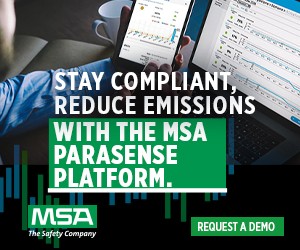International Fire Code to Defer to IIAR for Ammonia Issues
“About a month ago the technical committee for IFC approved a proposal to eliminate the mechanical refrigeration requirements in the IFC for ammonia systems and to defer to IIAR,” said Jeffrey Shapiro, president of International Code Consultants and a consultant to IIAR. “Beginning in 2024, if our IFC is successful, the only other document that will regulate ammonia refrigeration safety besides IIAR standards and design is building codes, and building codes apply to all buildings. That isn’t unique to ammonia refrigeration.”
The IFC change is subject to public comments before final approval. The fire code was the last of the model codes to defer to IIAR for ammonia-related issues.
As of the 2021 model codes, the International Mechanical Code (IMC), ASHRAE-15, the Uniform Mechanical Code (UMC), and the National Fire Protection Association (NFPA), all agreed to defer to IIAR-2 and other IIAR standards as the entire basis of regulating ammonia, Shapiro said while speaking during IIAR’s annual meeting.
BUILDING ON IIAR’S HISTORY
Eric Smith, Vice President and Technical Director at IIAR, said the progress builds on IIAR’s history. “The association was formed originally because there was an emergency code provision proposed through the National Electric Code that would have classified ammonia as a flammable substance that would have to be regulated by Class I Division II electrical equipment,” he said, explaining that the shift would have been disastrous for the ammonia refrigeration industry. “IIAR was formed to essentially challenge that proposed regulation.”
Ultimately, the NEC technical committee approved a modification that somewhat helped ammonia refrigeration in the 1971 code, but leaders in the ammonia refrigeration industry realized that ammonia needed its own association looking over its interests.
“IIAR was formed in 1971,” Shapiro said, adding that it is now celebrating its 50th anniversary. “A lot of people who have come to the industry in the past 10-15 years may know about the tree but don’t understand the roots.”
In the years that followed, particularly beginning in the early 70s, the model fire and mechanical codes stepped heavily into regulating the refrigeration industry. “The United States is unique among industrialized nations because the national government does not dictate building construction and fire-safety codes,” Shapiro explained. “Model codes provide the basis for building and fire-safety regulations in most U.S. communities, and thereby help to standardize regulations.”
Because there are multiple associations publishing codes, including the International Code Council, National Fire Protection Association, and International Association of Plumbing and Mechanical Officials, that generate revenue from code sales, training, etc., those organizations compete for adoptions. “As a result, even though we’re going for consistency at the national level, we end up with a lot of inconsistency,” Shapiro said.
Different regions of the country used different codes, and some states even left it to local jurisdictions to adopt the codes. “Each of these individual code bodies had their own specific requirements for refrigeration systems and even ammonia refrigeration systems, so depending on which area of the country you were working in, you had to follow the code that prevailed in that area, which didn’t always agree with what was stated in other codes, so requirements sometimes varied,” Smith said.
What’s more, codes were a way to influence the competition. “Competing refrigerants used the model codes as leverage to essentially try to increase the cost and complexity and regulatory environment for ammonia-based systems such that A1 refrigerant systems could slip in much more easily,” Shapiro said.
Ultimately, the IIAR board of directors decided it would be advantageous for the industry in many ways if people could use a single source for the design, operation, and installation of ammonia systems, Smith said. “They set about a decades-long project to align requirements and then essentially get these various code bodies to simply reference IIAR standards for ammonia refrigeration systems,” he explained.
Shapiro said initially IIAR had a difficult time influencing codes, but over the course of the past 20-plus years, the association has successfully navigated all its desired changes into all the model codes. “That got easier in 2000 when the International Code Council was formed,” Shapiro said. “The board set a subsequent agenda several years ago of having IIAR manage our regulatory destiny by getting model codes and ASHRAE 15 to defer regulation of ammonia refrigeration to IIAR standards.”
Smith said Shapiro has worked hard to advance IIAR’s work. “IIAR really appreciates Jeff’s efforts and recognizes his outstanding record in getting this job done for us,” he said.
LOOKING AHEAD
The changes will benefit the industry for years to come. In addition, Smith said the having the reference to IIAR 2 for ammonia in ASHRAE 15 has uncomplicated the process for ASHRAE to write their standard to include HFOs.
“Ammonia and HFOs have similar flammability characteristics, but HFOs are heavier than air and have no smell. This means that HFO refrigerant detection is crucial for safe installations, and so ASHRAE has focused on parameters for detector placement and detector response functions without the burden of considering ammonia’s unique characteristics. Also, because ammonia is regulated by federal and state government agencies due to its toxicity, it is easier for regulators as well as industry practitioners to be compliant when there is a single source for standards, he said.
However, there is still work to do and those within the industry must remain committed to safety. “Even after all model codes defer to IIAR standards, we are only one major incident away from code officials reconsidering and possibly reversing those deferrals if there is a feeling that IIAR has not been a good steward of building and community safety,” Shapiro said. “There is a long history of harsh, kneejerk reactions to major incidents in model codes. Their attitude is “you didn’t fix it, so we’re going to fix it for you,” so we can’t just rest on our laurels and forget where we’ve come from.”













